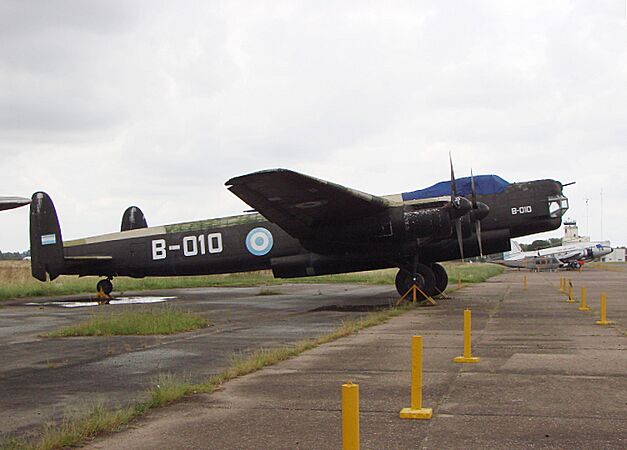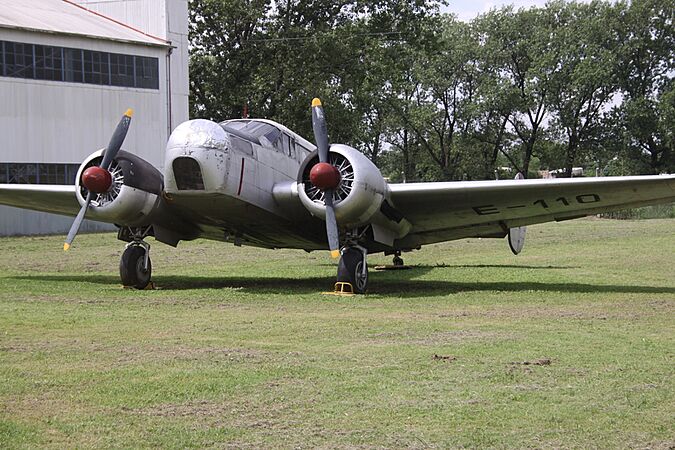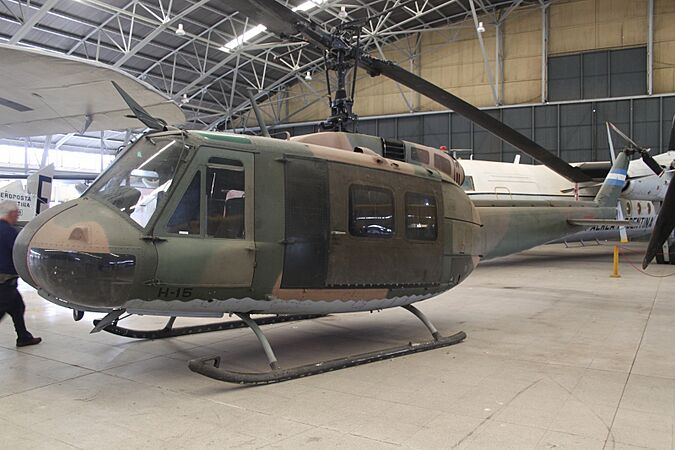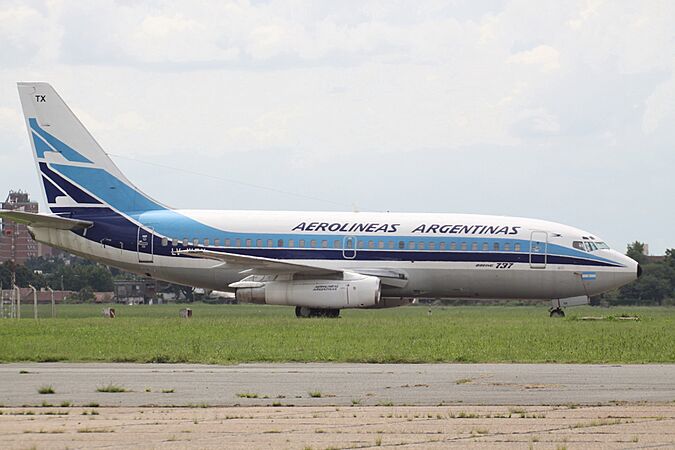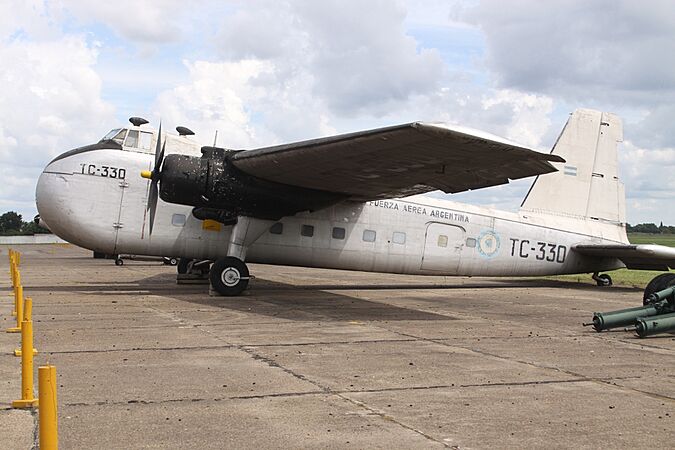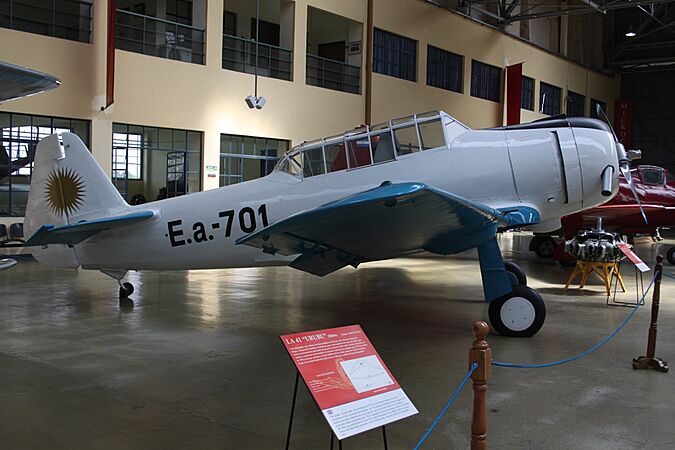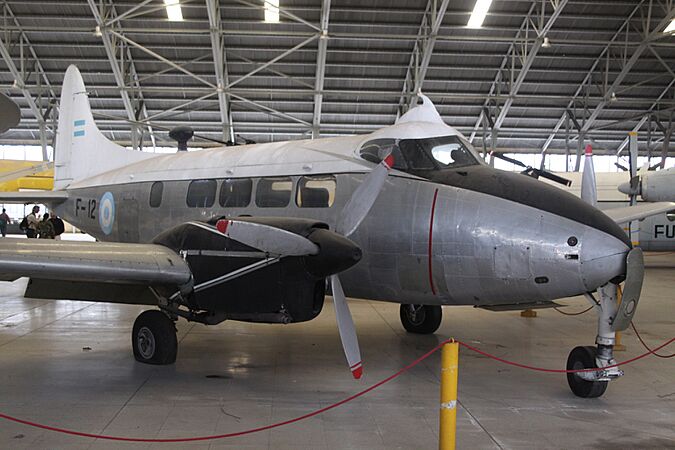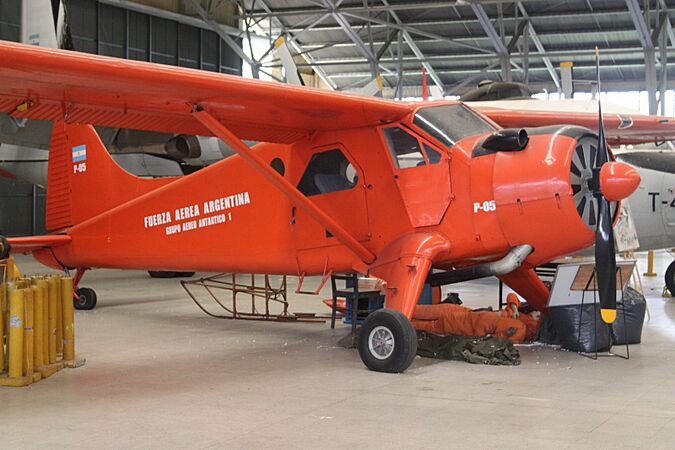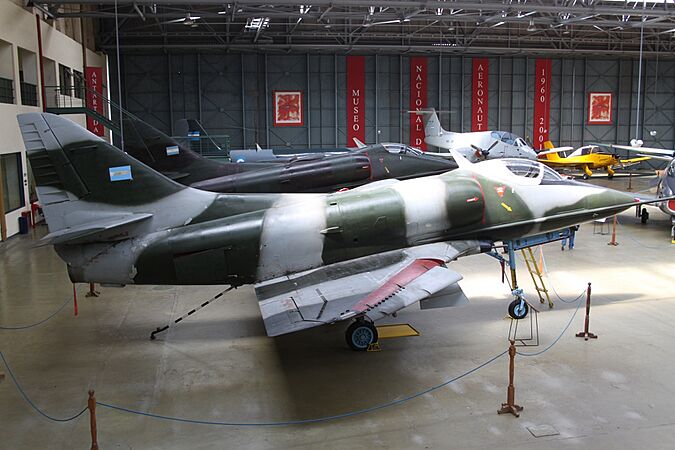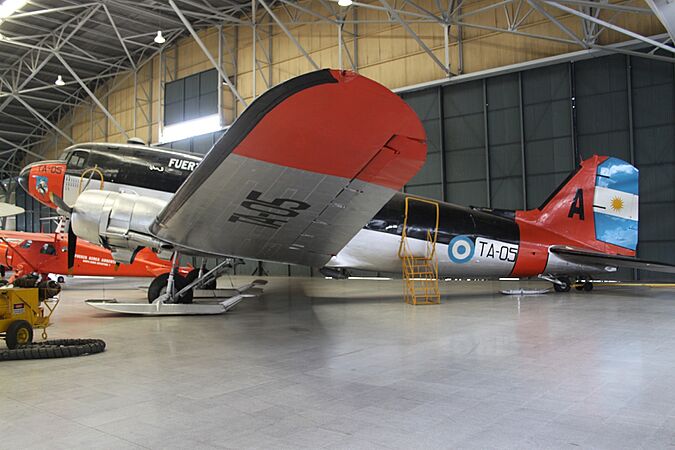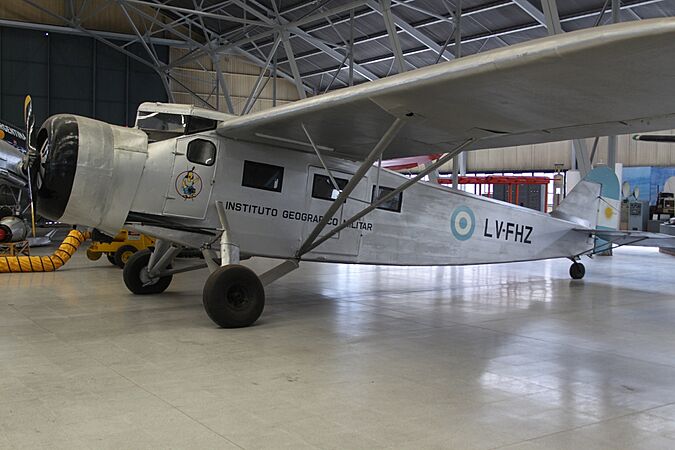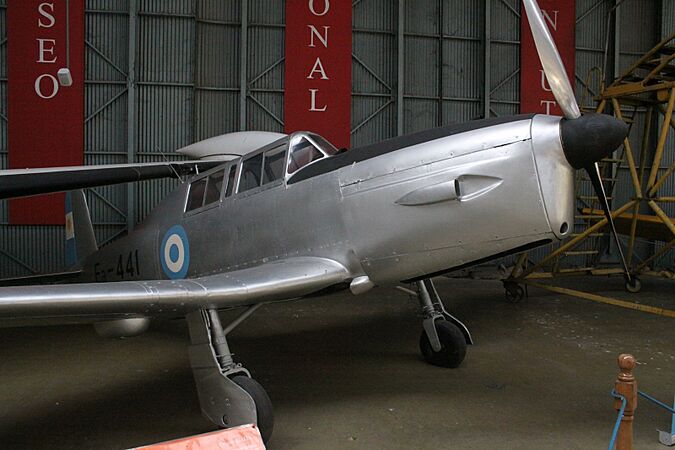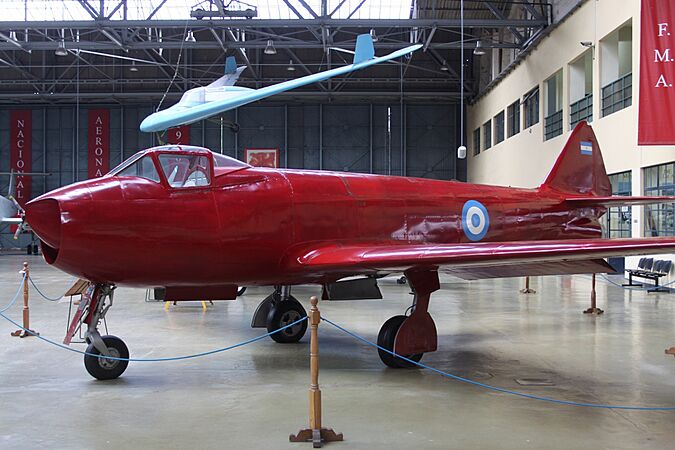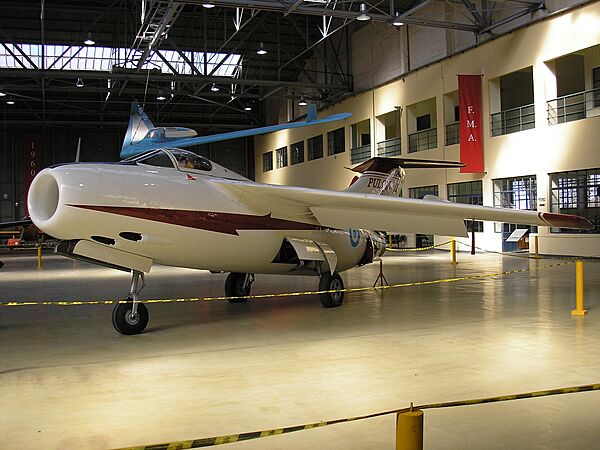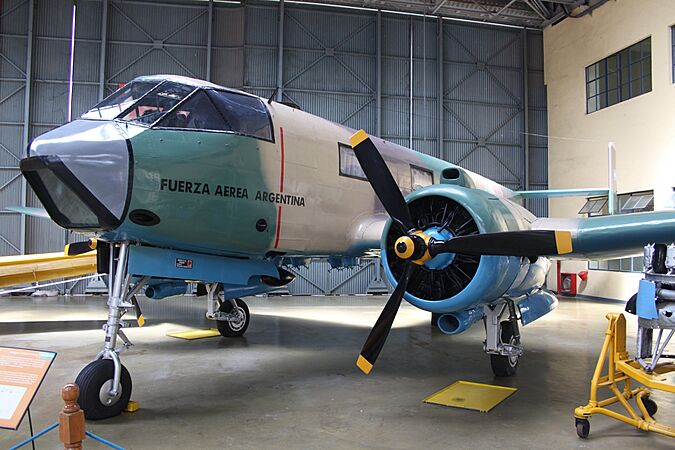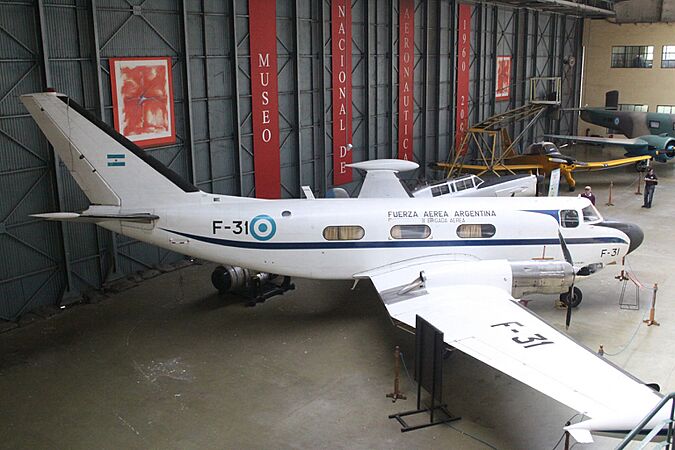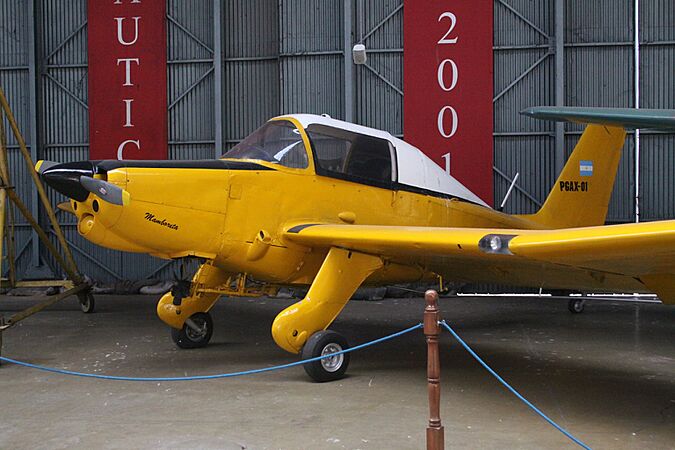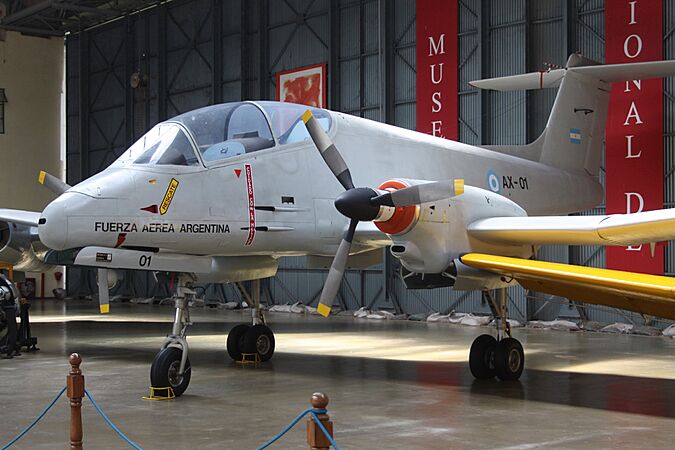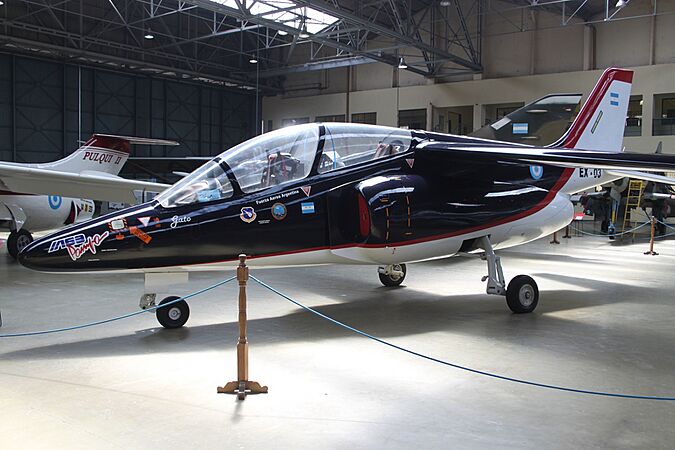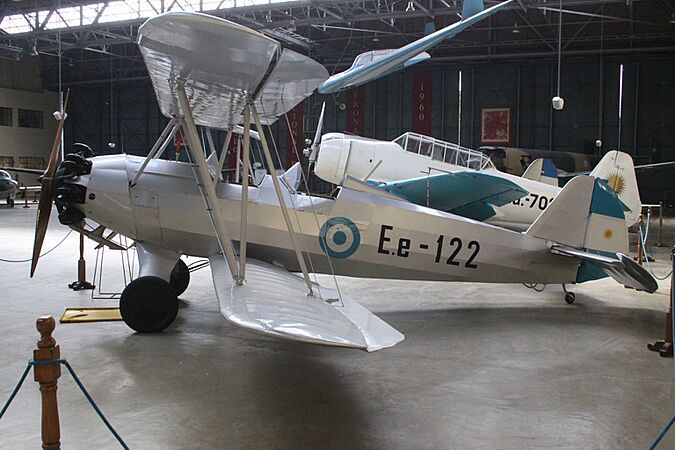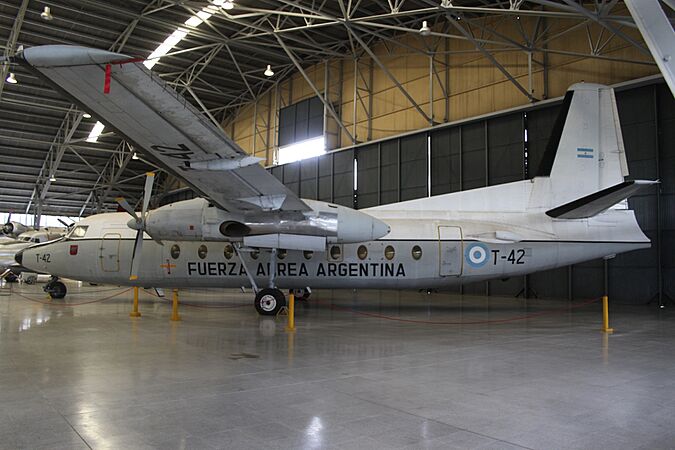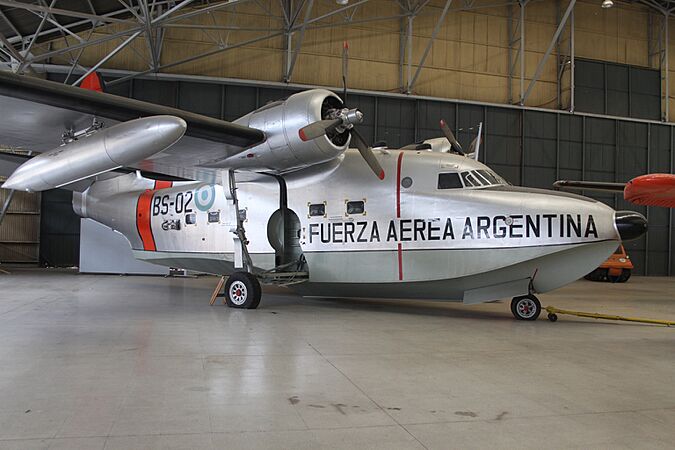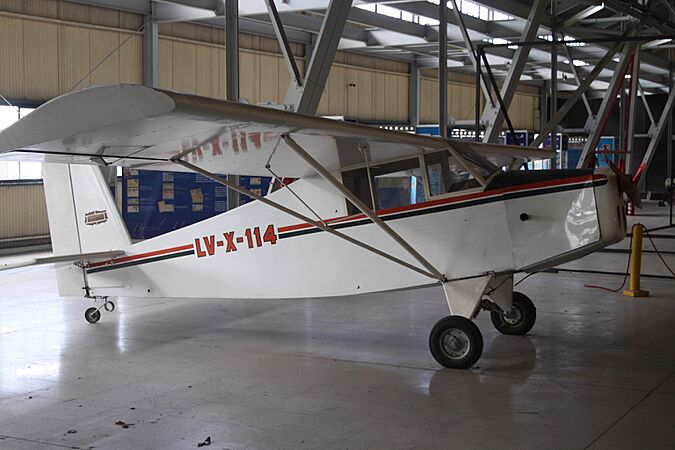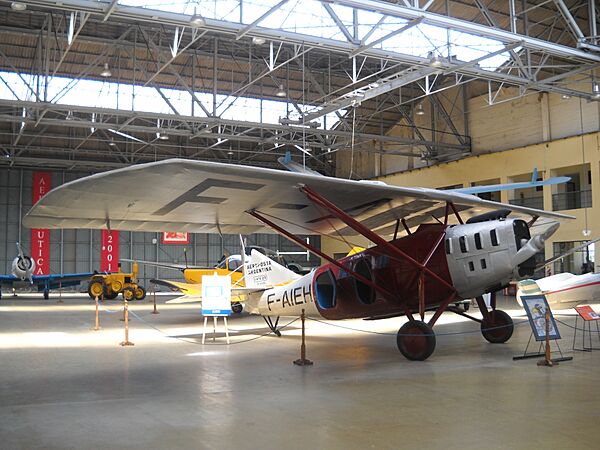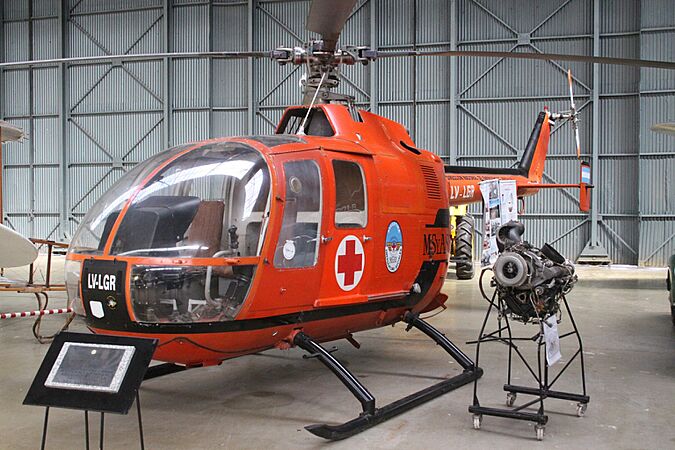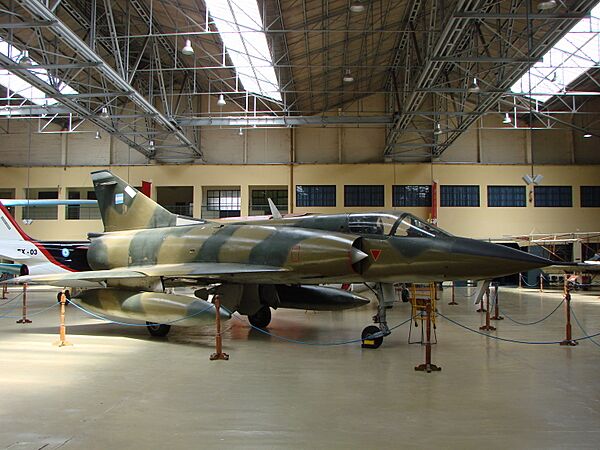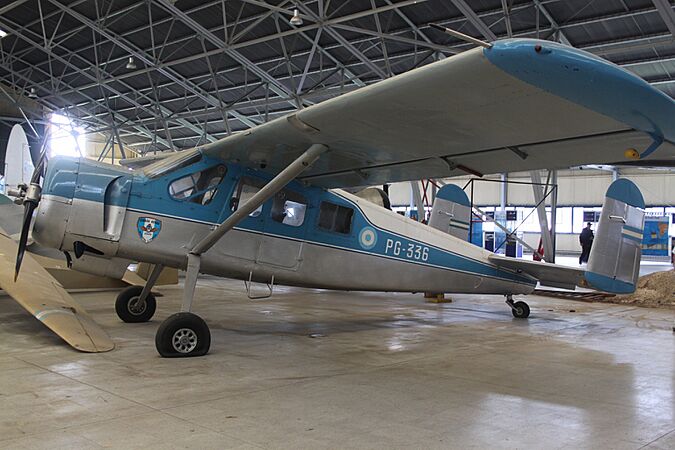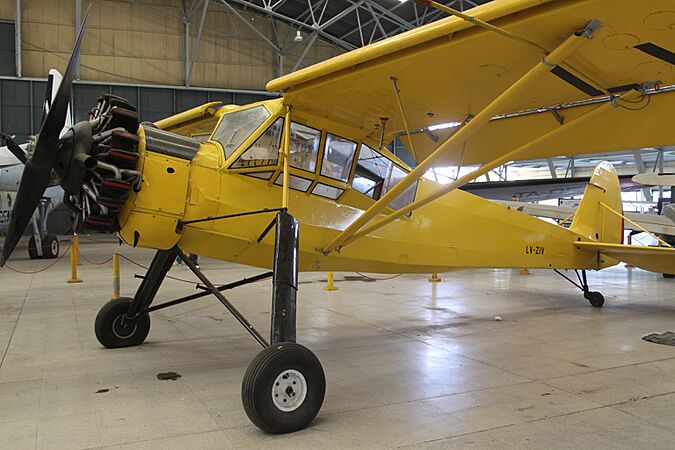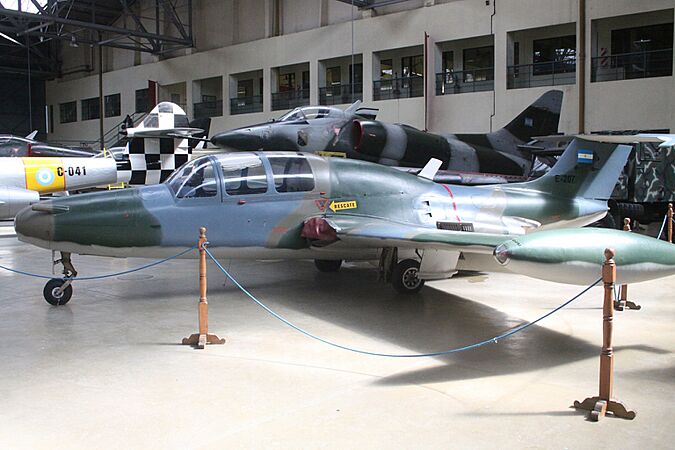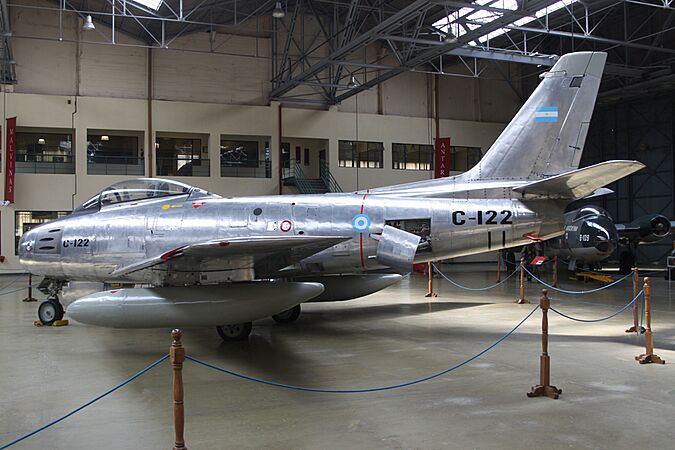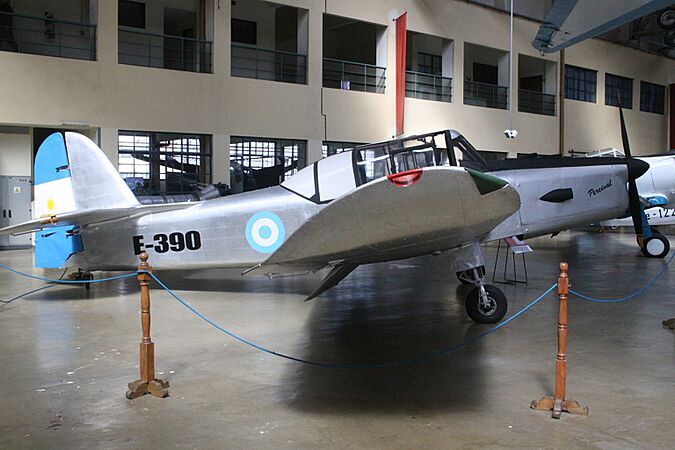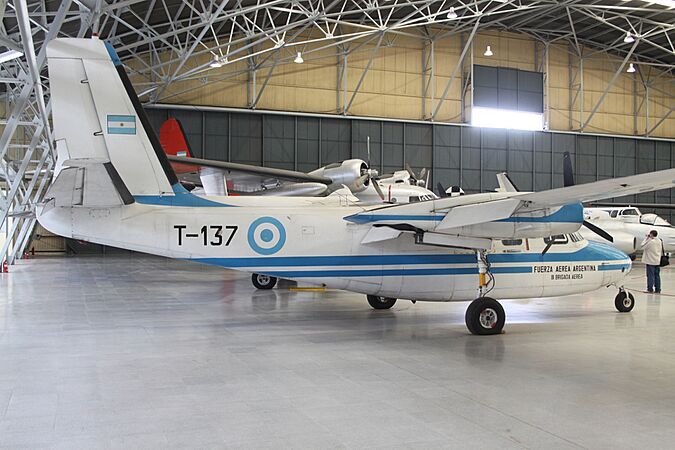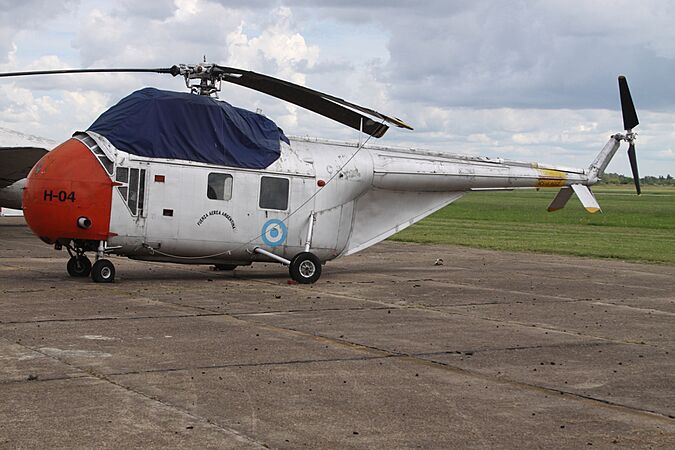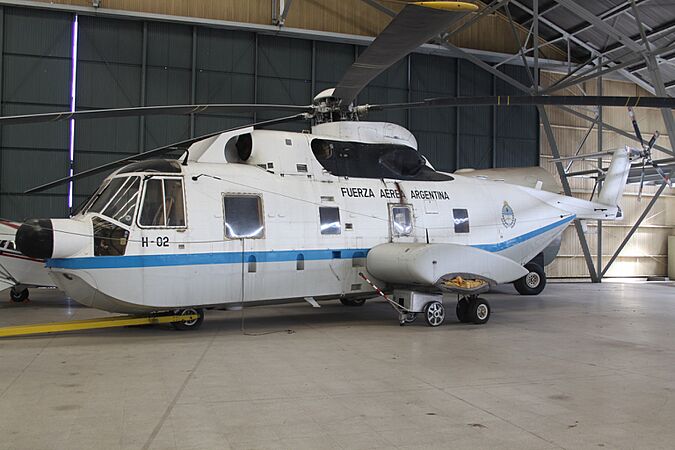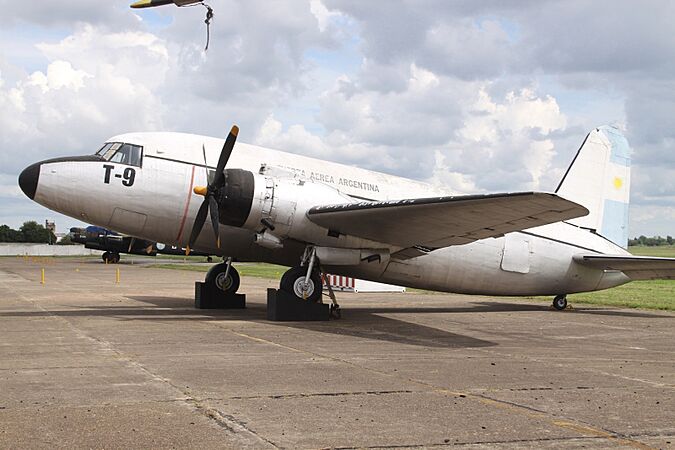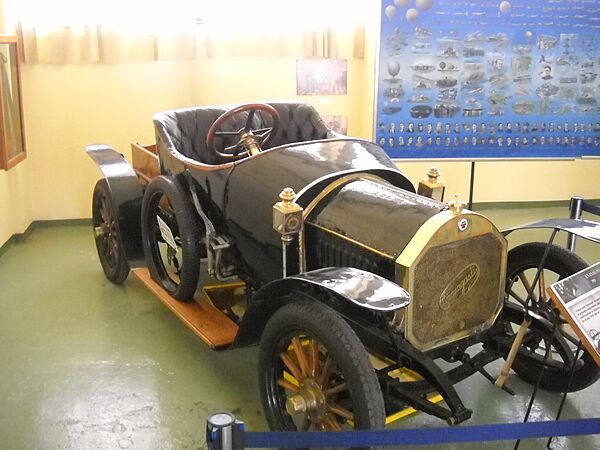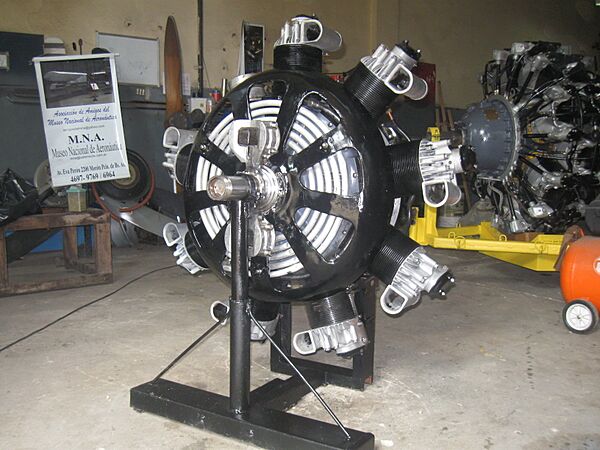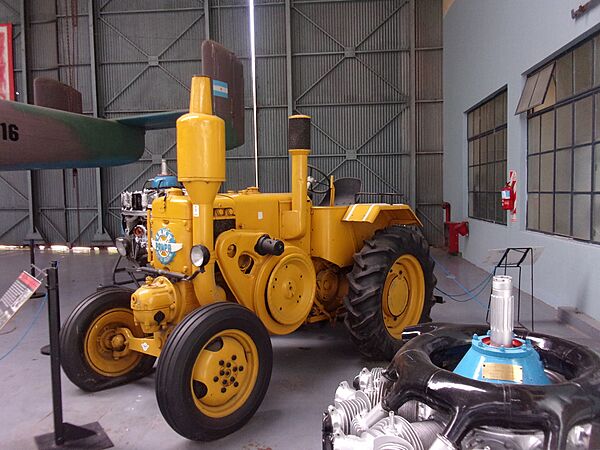Museo Nacional de Aeronáutica de Argentina facts for kids
| Museo Nacional de Aeronáutica Brigadier Edmundo Civati Bernasconi |
|
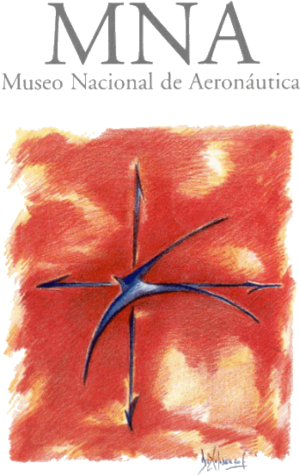 |
|
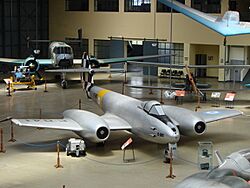
Main hall, with Gloster Meteor (foreground), Huanquero (background left), Focke Wulf 44 (background right), and Urubú (hanging from roof)
|
|
| Established | January 13, 1960 |
|---|---|
| Location | Morón, Buenos Aires, Argentina |
| Type | Aviation museum |
The National Aeronautics Museum "Brigadier Edmundo Civati Bernasconi" (also known as Museo Nacional de Aeronáutica in Spanish) is an exciting museum located in Morón, Buenos Aires, Argentina. It opened its doors in 1960. This museum is dedicated to sharing the amazing story of aviation, especially the history of the Argentine Air Force.
The museum has a fantastic collection of unique aircraft. You can see special planes like the Pulqui I and Pulqui II jet prototypes. There's also the Urubú flying wing glider, the I.Ae. 22 DL trainer, and even a Latécoère XXV plane once flown by the famous writer Antoine de Saint-Exupéry.
Contents
Museum History
How the Museum Started
The National Aeronautics Museum was created on January 13, 1960. This happened through a special order from the President of Argentina. Its first director and a big supporter was Brigadier Edmundo Civatti Bernasconi. The museum is named after him.
Moving to a New Home
The museum first opened at the Aeroparque Jorge Newbery. Here, the aircraft were displayed outside. This meant they were not protected from the weather. In the 1980s, people suggested moving the museum. They wanted to keep the valuable planes safe from rain and sun. A new location near the Ezeiza airport was considered.
In 2001, the museum finally moved to the Morón Airport and Air Base. This place was once Argentina's first international airport. It had large hangars available. These hangars could protect most of the museum's collection.
In February 2013, a McDonnell Douglas MD-81 airplane was given to the museum. This plane, which used to belong to Austral Líneas Aéreas, was named LV-WFN. It was donated for restoration and to be put on display. This aircraft is special because it had flown more hours than any other plane of its type in the world. It had flown 70,444 hours before it retired in March 2012.
Museum Facilities
The museum is organized into different halls. Each hall focuses on a specific theme or type of aviation history.
- Motores Hall: This area displays various aviation engines.
- Malvinas Hall: Here, you can see items related to the Falklands War. It includes a Grumman HU-16 Albatross amphibian plane. This plane was used in the 1970s for flights between Comodoro Rivadavia and the Malvinas (Falkland Islands).
- Antartida Hall: This hall features equipment and materials used in Argentine Antarctica.
- Pioneros Hall: This section celebrates the brave people who were pioneers in aviation.
- Torre de control Hall: You can explore the inside of a control tower here.
- Pegaso Hall: This hall is used for special events.
- Icaro Hall: This is where the museum's coffee shop is located.
There is also a small gift shop where visitors can buy souvenirs.
Museum Collections
The museum has an impressive collection of aircraft and other aviation-related items.
Aircraft on Display
The museum features many different types of aircraft. These include both fixed-wing planes and helicopters.
Fixed-wing Aircraft
- Avro Lincoln B.2 B-004 (displayed as B-010)
- Beechcraft AT-11 Kansan
- Blériot XI
- Boeing 737 LV-WTK (donated by Aerolíneas Argentinas)
- Bristol Freighter 1A
- Dassault Mirage III (versions C, DA I-002, and EA I-011)
- de Havilland Beaver
- de Havilland Dove
- DINFIA IA 35b Huanquero A-305
- Douglas A-4 Skyhawk (versions A-4P C-207 and A-4C C-322)
- Douglas C-47A-85-DL TA-05 (modified for Antarctic transport)
- Douglas C-54 (cabin section)
- English Electric Canberra B Mk.62 B-109 (the last one to fly a mission in the Falklands War)
- Fairchild 82D LV-FHZ (formerly T-152)
- Fairchild Swearingen Metro II (currently being restored)
- Farman HF.7
- Fiat G.46 (a post-war military trainer)
- Hercules C-130B
- FMA IA 22 DL (a trainer built by FAdeA)
- FMA IA 27 Pulqui I prototype (the first jet designed and built in Latin America)
- FMA IA 33 Pulqui II prototype 5 (the first swept-wing jet fighter designed and built in Latin America)
- FMA IA 41 Urubú (a flying wing glider designed by Reimar Horten)
- FMA IA 50 Guaraní II F-31 and LQ-JXY
- FMA IA 53 Mamboretá
- FMA IA 58 Pucará
- FMA IA 63 Pampa EX-03 mock-up
- Focke Wulf FW-44J (a biplane trainer)
- Fokker F.27-600 T-42
- Gloster Meteor F.4 I-041 (formerly EE586)
- Grumman HU-16B Albatross
- Hiller UH-12E
- Hughes 369HE
- Israeli Aircraft Industries Dagger
- Junkers Ju 52/3m (WNr.4043)
- Latécoère XXV (flown by Antoine de Saint-Exupéry for Aeroposta Argentina)
- Max-Holste 1521 Broussard
- Morane-Saulnier MS.502
- Morane-Saulnier MS.760 Paris
- North American F-86F Sabre
- Percival Prentice T.1
- Rockwell Aero Commander 500U
- Vickers Viking 1B T-9
- Wright Flyer replica
Rotary-wing Aircraft (Helicopters)
- Bell UH-1H
- Boeing Chinook
- Bolkow Bo 105
- Cierva C.30 autogiro
- Sikorsky S-55 helicopter H-04
- Sikorsky S-61R H-02 (used by the Presidential flight)
Engines on Display
- Napier Sabre IIA inline engine
- Packard DR-980 radial diesel engine
Other Exhibits
- Anasagasti car (used by the Argentine Air Force)
- Pampa tractor
Gallery
Aircraft Displayed
Other Objects Displayed
Images for kids
See also
 In Spanish: Museo Nacional de Aeronáutica para niños
In Spanish: Museo Nacional de Aeronáutica para niños
- List of aerospace museums



